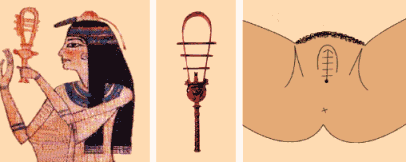|
Prohibited Sexual Behavior and Sexual Violence
|
|
Sexual Violence: Mutilation of Female Sex Organs: Origin 2
|
|
Sigmund Freud and other psychoanalysts have speculated about the deeper meaning of deliberate sexual mutilations. In one way or another, they saw in them marks of sexual oppression. At any rate, today, the practices of clitoridectomy, excision, and infibulation continue mostly in regions where people are poor and illiterate and where women have a low social status. They lead their entire lives within rigid patriarchal structures: Virginity is equated with “purity”, menstruating women are “unclean”, and arranged or forced marriages are common. Males dominate the religious, political, and legal systems. They set the rules at home and inherit the family’s possessions. Under these conditions, girls are brought up to believe that they must be “purified” by means of some sexual mutilation, or they will have no chance to be married. Marriage, however, is their only way of finding social recognition and economic security. For this reason, women are often the strongest defenders of the practice. Suffering pain and injury seems preferable to becoming social outcasts.
 |
Egyptian sistrum
The sistrum was a scred ancient Egyption musical instrument, designed to produce a tinkling or rattling sound when shaken. Students of sexual symbolism have often noted that, in its most common form, the sistrum is reminiscent of an infibulated vulva. Left: Ancient Egyptian painting of a woman holding a sistrum. Middle: Picture of the instrument. Right: Vulva after a „pharaonic circumcision“, i.e. an infibulation. |